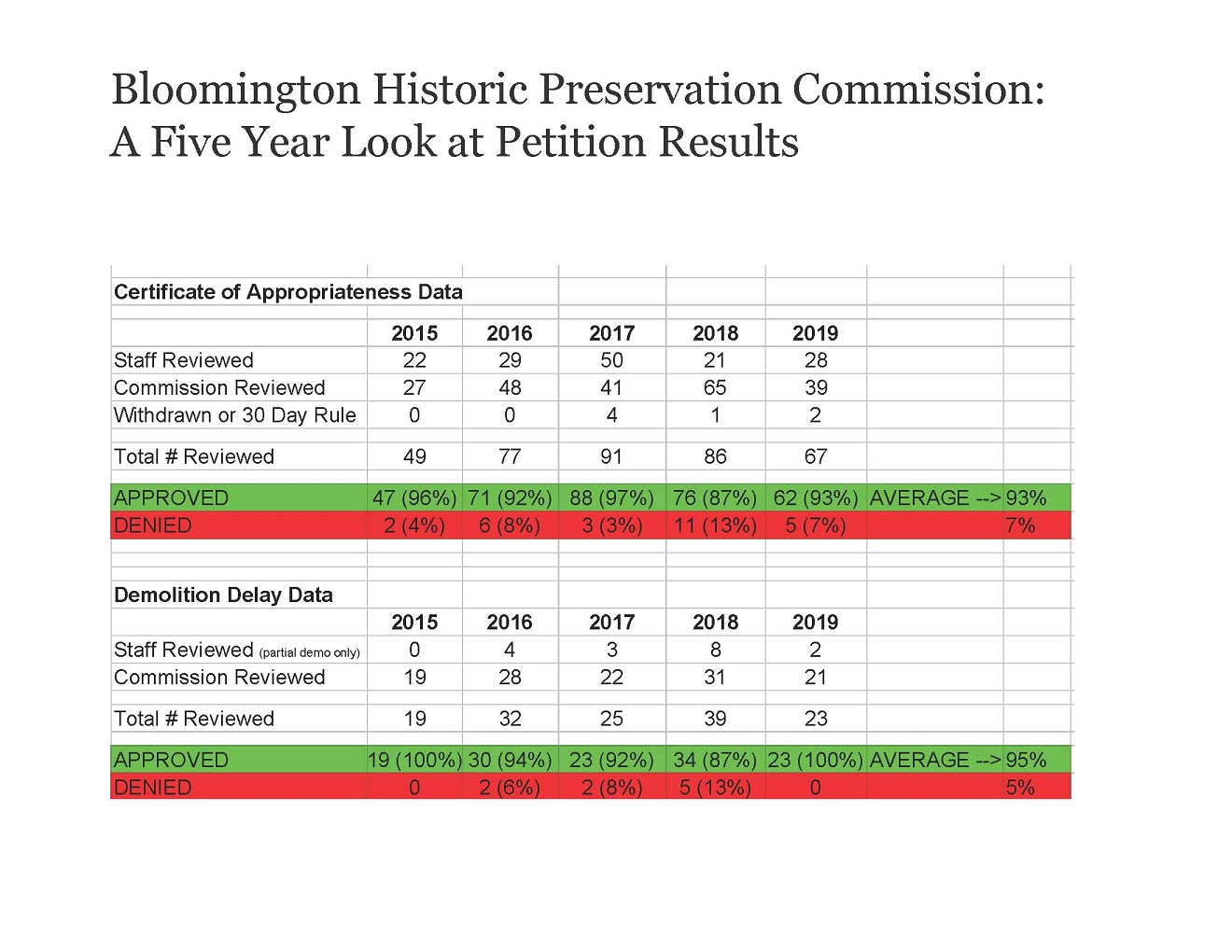Page last updated on February 28, 2024 at 7:07 am

Useful Links
City of Bloomington
- Bloomington Historic Sites and Structures Survey
- Bloomington Historic Preservation Commission
- Historic Districts
- Conservation Districts
- MyBloomington
- Local Historic Districts Interactive Map
- Certificate of Appropriateness
- Demolition Delay
- Local Designation Process
- Local Historic District Design Guidelines
Grants
- Bloomington Urban Enterprise Association: Historic Facade Grant
- Historic Preservation Commission Consulting Grant
Historic Preservation Information
- Secretary of the Interior's Standards for Rehabilitation
- Secretary of the Interior's Standards for the Treatment of Historic Properties
- State Historic Architectural and Archaeological Research Database (SHAARD)
- Indiana Department of Natural Resources - Historic Preservation and Archaeology
Historic Preservation Terms Explained
National Register District vs. Local Historic District: A property may be both listed as part of a local historic district and as part of a National Register of Historic Places district. Only properties located within local historic districts are subject to review by the Historic Preservation Commission through the Certificate of Appropriateness (COA) process. National Historic Districts contribute to a larger pattern of national historical significance and have this added layer of recognition.
Locally Designated: The City of Bloomington has placed local historic preservation protections on a property or group of properties. These properties are subject to the review by the Historic Preservation Commission if exterior alterations are made.
Local Historic District Design Guidelines: Every locally designated historic district in Bloomington has outlined district-specific design guidelines that govern what type of exterior modifications can be made to a structure and what materials can be used to replace existing structural components. To find specific district guidelines, visit the City of Bloomington Local Historic Districts webpage.
State Historic Architectural and Archaeological Research Database (SHAARD): A database that is comprised of locally surveyed and documented structures and sites. One of four architectural integrity ratings are used on every structural survey: non-contributing, contributing, notable, or outstanding. Based on the structural rating, a property is subject to different processes of review within the City of Bloomington if exterior alterations are made: no review, demolition delay, or certificate of appropriateness review.
Non-Contributing: A local structure that has lost a high degree of its original historic integrity or is fewer than 50 years old. It is possible for a non-contributing building to be located within a locally designated historic district.
Contributing: A local structure has been determined to retain enough historic integrity to be included in a larger local historic district if a petition was ever filed to create a new historic district. This does not mean a property is locally designated, however, it may mean that exterior alterations may be subject to the Demolition Delay process.
Notable: These properties retain an above-average amount of historic integrity and are eligible to be included in the National Register of Historic Places.
Outstanding: These properties retain the highest level of historic integrity, meaning that minor or no alterations have been made to the exterior of the structure since its construction. These buildings may also be rated outstanding for their architectural significance as well as for their cultural significance.
